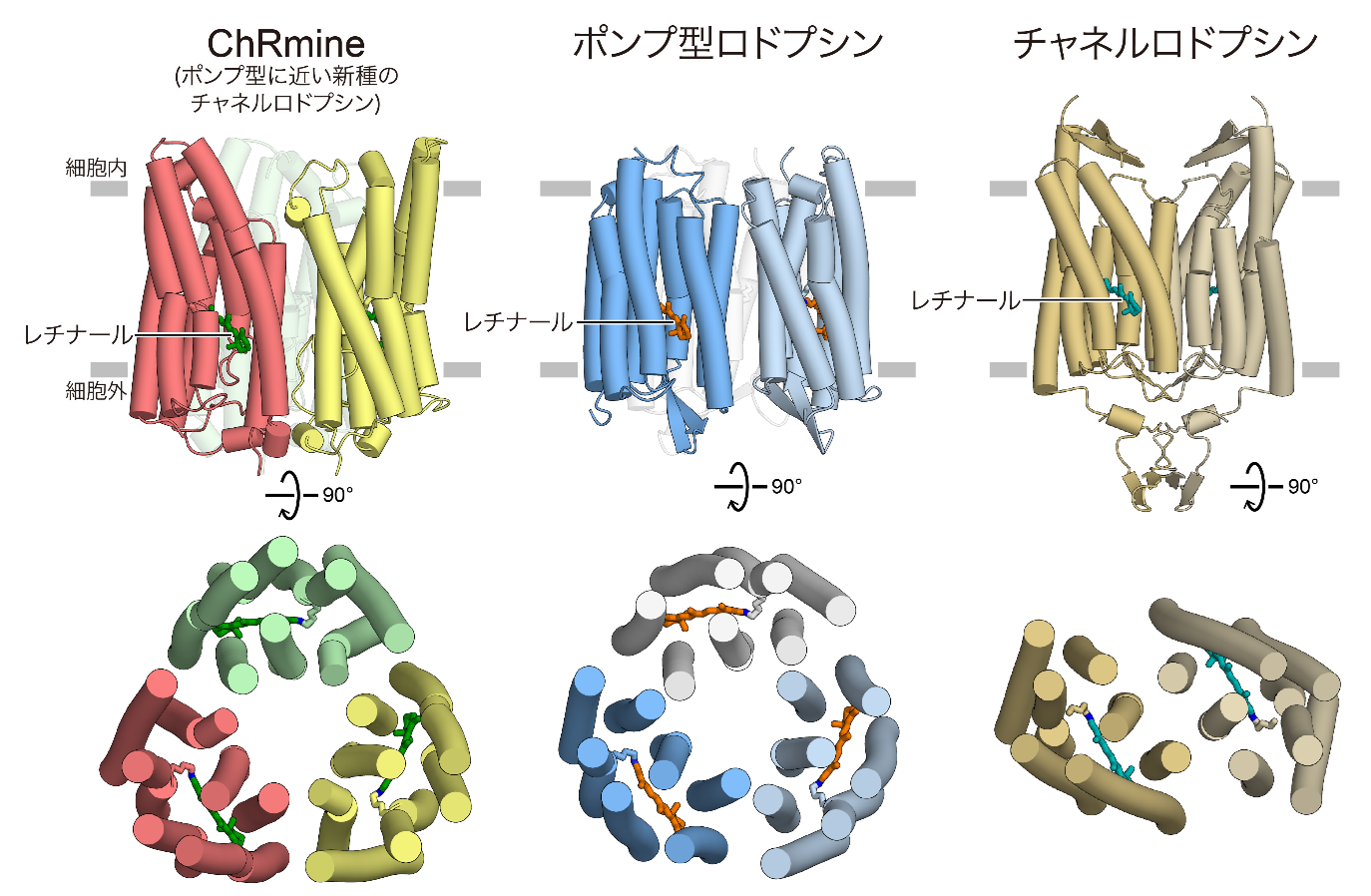DATE2022.02.03 #Press Releases
Structural Elucidation of Novel Light-Driven Ion Channels and Creation of High-Performance Molecular Tools
Disclaimer: machine translated by DeepL which may contain errors.
~Shedding Light on Neuroscience~.
Graduate School of Arts and Sciences, The University of Tokyo
Graduate School of Science, The University of Tokyo
Institute for Solid State Physics, The University of Tokyo
Kyoto University
Japan Science and Technology Agency
Japan Agency for Medical Research and Development
Overview
Optogenetics is an innovative technology to control specific neuronal activities by "light" and has become an essential technology in neuroscience. The photogenetics uses channelrhodopsin, a photoreceptor protein, as a tool, and new photogenetic tools are being discovered and improved every day.
ChRmine, a channelrhodopsin recently discovered in nature, is not only a very powerful photogenetic tool with its high ion current, high photosensitivity, and activation by long-wavelength light, but also has the interesting feature that although it functions as a channelrhodopsin, its amino acid sequence is similar to that of pump-type It also has the interesting feature that its amino acid sequence is close to that of pump rhodopsin, even though its function is that of a channel rhodopsin. However, it was unclear how ChRmine could act as an ion channel.
In this study, Koichiro Kishi, Associate Professor Hideaki Kato, and their colleagues at the Graduate School of Arts and Sciences, The University of Tokyo, succeeded in determining the three-dimensional structure of ChRmine using cryo-EM. As a result, they found that ChRmine is globally similar to the pump type, while locally it has several structural features not found in the conventional pump and channel types, which contribute to the determination of unique molecular functions of ChRmine. Based on the structural findings, we developed a modified ChRmine that further enhances the property of ChRmine to be activated by long-wavelength light, enabling more advanced optogenetics experiments in which multiple neuronal populations can be simultaneously photo-manipulated and measured using three different colors of visible light.
The results of this research are expected to lead to advances in neuroscience and medicine, not only by deepening our understanding of how diverse channelrhodopsins function as ion channels, but also by providing a road map for the design and creation of novel rhodopsins and a powerful tool for the field of neuroscience.
The research results were published in the online edition of the American scientific journal Cell on February 2, 2022 (EST).

Figure: Overall structure of ChRmine, pump-type rhodopsin, and channelrhodopsin. Conventional channelrhodopsin forms a dimer, whereas ChRmine and pump-type rhodopsin form a trimer.
Dr. Tsukasa Kusakizako, Assistant Professor in the Department of Biological Sciences, participated in this research achievement.
For more information, please visit the website of the Graduate School of Arts and Sciences and College of Arts and Sciences, The University of Tokyo.


